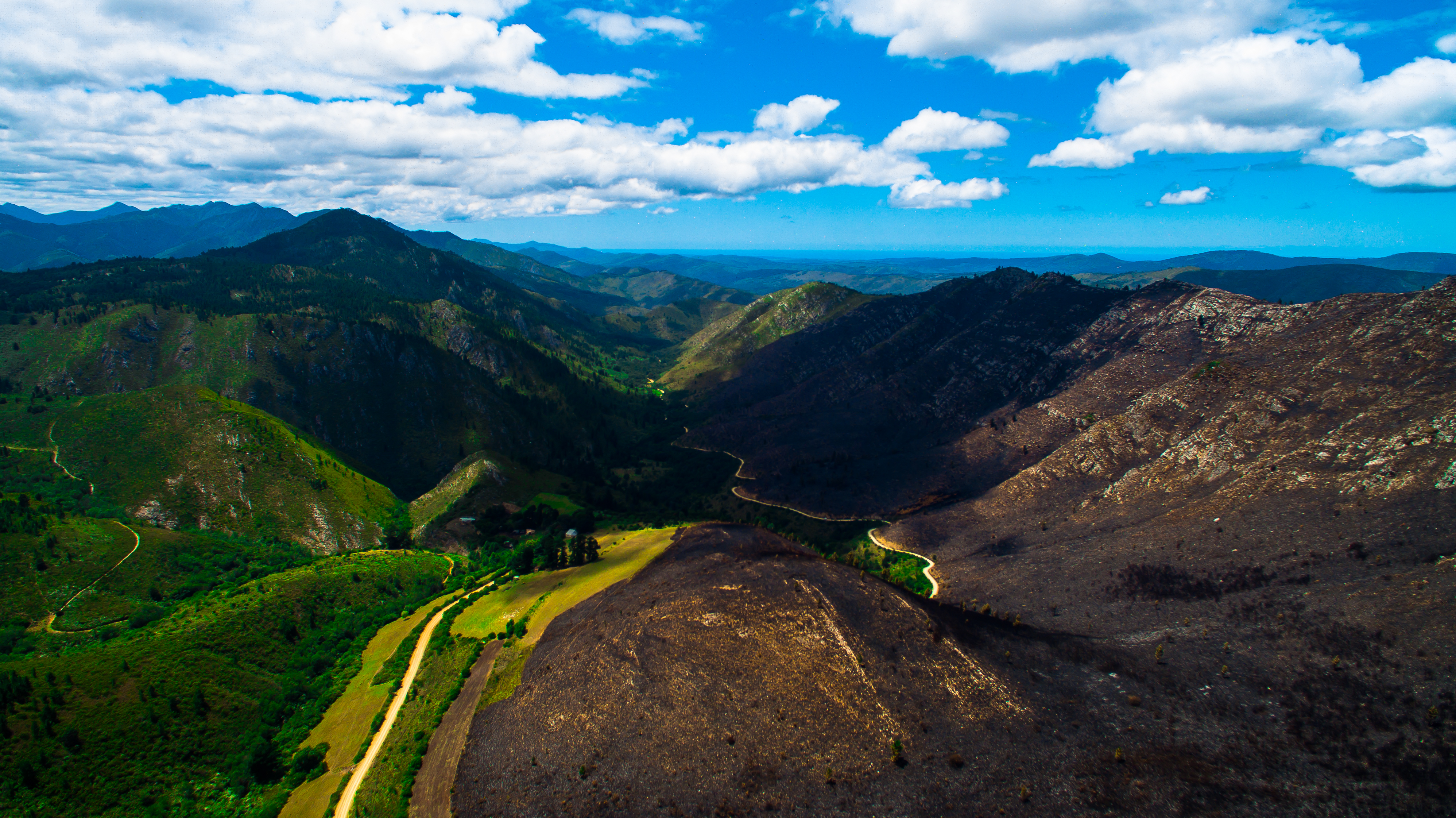|
Glaucium Grandiflorum
''Glaucium grandiflorum'', the great-flowered horned poppy, is a species of flowering plant in the horned poppy genus which is native to the Middle East. Description The species is a perennial flowering plant which has scalloped, blue-gray leaves. It flowers in the summer and fall with orange-red flowers that are in diameter. These flowers are on long stems which extend above the plant's foliage. The seed pods ripen in late summer. ''Glaucium grandiflorum'' grows and can have one or more main stems. These stems are branched, and are covered with rather dense hairs. The petals are long. There are numerous stamens with anthers in length. Their filaments are monotronic in the upper half and broadened in the lower half. The pedicals, when fruiting, can be up to long, and are erect or contorted and hairy. The stigma are broad. Phytochemistry Numerous alkaloids have been isolated from the plant, including norchelidonine, dihydrochelerythrine, 8-acetonyldihydrochelerythrine ... [...More Info...] [...Related Items...] OR: [Wikipedia] [Google] [Baidu] |
Glaucium
''Glaucium'' (horned poppy) is a genus of about 25 species of annual, biennial or perennial herbaceous flowering plants in the family Papaveraceae, native to Europe, north Africa, and southwest and central Asia. The species commonly occur in saline habitats, including coasts and salt pans. List of species , Plants of the World Online accepted the following species: *''Glaucium acutidentatum'' Hausskn. & Bornm. *'' Glaucium afghanicum'' Kitam. *'' Glaucium alakirensis'' Aykurt, K.Yıldız & Özçandır *'' Glaucium aleppicum'' Boiss. & Hausskn. *''Glaucium arabicum'' Fresen. *''Glaucium calycinum'' Boiss. *''Glaucium cappadocicum'' Boiss. *''Glaucium contortuplicatum'' Boiss. *''Glaucium corniculatum'' (L.) Rudolph (sea poppy) *''Glaucium cuneatum'' Cullen *''Glaucium elbursium'' Mory *''Glaucium elegans'' Fisch. & C.A.Mey. *''Glaucium fimbrilligerum'' Boiss. *''Glaucium flavum'' Crantz (yellow horned poppy) *'' Glaucium grandiflorum'' Boiss. & A.Huet (grand-flowered horned pop ... [...More Info...] [...Related Items...] OR: [Wikipedia] [Google] [Baidu] |
Middle East
The Middle East (term originally coined in English language) is a geopolitical region encompassing the Arabian Peninsula, the Levant, Turkey, Egypt, Iran, and Iraq. The term came into widespread usage by the United Kingdom and western European nations in the early 20th century as a replacement of the term Near East (both were in contrast to the Far East). The term "Middle East" has led to some confusion over its changing definitions. Since the late 20th century, it has been criticized as being too Eurocentrism, Eurocentric. The region includes the vast majority of the territories included in the closely associated definition of West Asia, but without the South Caucasus. It also includes all of Egypt (not just the Sinai Peninsula, Sinai) and all of Turkey (including East Thrace). Most Middle Eastern countries (13 out of 18) are part of the Arab world. The list of Middle Eastern countries by population, most populous countries in the region are Egypt, Turkey, and Iran, whil ... [...More Info...] [...Related Items...] OR: [Wikipedia] [Google] [Baidu] |
Alkaloid
Alkaloids are a broad class of natural product, naturally occurring organic compounds that contain at least one nitrogen atom. Some synthetic compounds of similar structure may also be termed alkaloids. Alkaloids are produced by a large variety of organisms including bacteria, fungus, fungi, Medicinal plant, plants, and animals. They can be purified from crude extracts of these organisms by acid-base extraction, or solvent extractions followed by silica-gel column chromatography. Alkaloids have a wide range of pharmacology, pharmacological activities including antimalarial medication, antimalarial (e.g. quinine), asthma, antiasthma (e.g. ephedrine), chemotherapy, anticancer (e.g. omacetaxine mepesuccinate, homoharringtonine), cholinomimetic (e.g. galantamine), vasodilation, vasodilatory (e.g. vincamine), Antiarrhythmic agent, antiarrhythmic (e.g. quinidine), analgesic (e.g. morphine), antibacterial (e.g. chelerythrine), and anti-diabetic, antihyperglycemic activities (e.g. berb ... [...More Info...] [...Related Items...] OR: [Wikipedia] [Google] [Baidu] |
Protopine
Protopine is an alkaloid occurring in opium poppy, ''Corydalis'' tubers and other plants of the family papaveraceae, like ''Fumaria officinalis''. Protopine is metabolically derived from the Benzylisoquinoline alkaloids, benzylisoquinoline alkaloid (''S'')-Reticuline through a progressive series of five enzymatic transformations: 1) BBE-like enzymes, berberine bridge enzyme to Scoulerine, (''S'')-Scoulerine; 2) (S)-cheilanthifoline synthase, (''S'')-cheilanthifoline synthase/CYP719A25 to (S)-cheilanthifoline, (''S'')-Cheilanthifoline; 3) (S)-stylopine synthase, (''S'')-stylopine synthase/CYP719A20 to (''S'')-Stylopine; 4) (''S'')-tetrahydroprotoberberine ''N''-methyltransferase to (''S'')-''cis''-''N''-Methylstylopine; and ultimately, 5) ''N''-methylstylopine hydroxylase to protopine. It has been found to inhibit histamine H1 receptors and platelet aggregation, and acts as an analgesic. See also * Protopine 6-monooxygenase * Cryptopine * Bürgi-Dunitz angle References < ... [...More Info...] [...Related Items...] OR: [Wikipedia] [Google] [Baidu] |
Allocryptopine '', '' Hunnemannia fumariifolia'', ''Eschscholzia lobbii'' and other Papaveraceae plants.
Allocryptopine is a bioactive alkaloid found in plants of the Papaveraceae family, including ''Glaucium arabicum'', '' Argemone mexicana'', '' Eschscholtzia'', ''Corydalis'', '' Fumaria'', ''Chelidonium ''Chelidonium'', commonly known as celandines, is a small genus of flowering plants in the Papaveraceae, poppy family, This genus is native to northern Africa and Eurasia, where they are widespread, ranging from western Europe to east Asia. See also * CryptopineReferences Alkaloids[...More Info...] [...Related Items...] OR: [Wikipedia] [Google] [Baidu] |
Tetrahydropalmatine
Tetrahydropalmatine (THP) is an isoquinoline alkaloid found in several different plant species, mainly in the genus ''Corydalis'' ( Yan Hu Suo), but also in other plants such as '' Stephania rotunda''. These plants have traditional uses in Chinese herbal medicine. The pharmaceutical industry has synthetically produced the more potent enantiomer Levo-tetrahydropalmatine (Levo-THP; technically ''l''-THP, often written L-THP), which has been marketed worldwide under different brand names as an alternative to anxiolytic and sedative drugs of the benzodiazepine group and analgesics such as opiates. It is also sold as a dietary supplement. In 1940, a Vietnamese scientist Sang Dinh Bui extracted an alkaloid from the root of '' Stephania rotunda'' with the yield of 1.2–1.5% and he named this compound rotundin. From 1950 to 1952, two Indian scientists studied and extracted from ''Stephania glabra'' another alkaloid named hyndanrine. In 1965, the structure of rotundine and hyndari ... [...More Info...] [...Related Items...] OR: [Wikipedia] [Google] [Baidu] |
Eastern Mediterranean
The Eastern Mediterranean is a loosely delimited region comprising the easternmost portion of the Mediterranean Sea, and well as the adjoining land—often defined as the countries around the Levantine Sea. It includes the southern half of Turkey's main region, Anatolia; its smaller Hatay Province; the island of Cyprus; the Greek Dodecanese islands; and the countries of Egypt, Israel, Jordan, State of Palestine, Palestine, Syria and Lebanon. Its broadest uses can encompass the Libyan Sea (thus Libya), the Aegean Sea (thus East Thrace, European Turkey and the mainland and islands of Greece), and the Ionian Sea (thus southern Albania in Southeast Europe) and can extend west to Italy's farthest south-eastern coasts. Jordan is climatically and economically part of the region. Regions The eastern Mediterranean region is commonly interpreted in two ways: *The Levant, including its historically tied neighboring countries, Balkans and islands of Greece. *The Syria (region), region of Sy ... [...More Info...] [...Related Items...] OR: [Wikipedia] [Google] [Baidu] |
Iran
Iran, officially the Islamic Republic of Iran (IRI) and also known as Persia, is a country in West Asia. It borders Iraq to the west, Turkey, Azerbaijan, and Armenia to the northwest, the Caspian Sea to the north, Turkmenistan to the northeast, Afghanistan to the east, Pakistan to the southeast, and the Gulf of Oman and the Persian Gulf to the south. With a Ethnicities in Iran, multi-ethnic population of over 92 million in an area of , Iran ranks 17th globally in both List of countries and dependencies by area, geographic size and List of countries and dependencies by population, population. It is the List of Asian countries by area, sixth-largest country entirely in Asia and one of the world's List of mountains in Iran, most mountainous countries. Officially an Islamic republic, Iran is divided into Regions of Iran, five regions with Provinces of Iran, 31 provinces. Tehran is the nation's Capital city, capital, List of cities in Iran by province, largest city and financial ... [...More Info...] [...Related Items...] OR: [Wikipedia] [Google] [Baidu] |
Disturbance (ecology)
In ecology, a disturbance is a change in environmental conditions that causes a pronounced change in an ecosystem. Disturbances often act quickly and with great effect, to alter the physical structure or arrangement of biotic component, biotic and abiotic elements. A disturbance can also occur over a long period of time and can impact the biodiversity within an ecosystem. Ecological disturbances include fires, flooding, storms, insect outbreaks, trampling, Human impact on the environment, human presence, earthquakes, plant diseases, infestations, volcanic eruptions, impact events, etc. Not only invasive species can have a profound effect on an ecosystem, native species can also cause disturbance by their behavior. Disturbance forces can have profound immediate effects on ecosystems and can, accordingly, greatly alter the Biocoenosis, natural community’s population size or species richness. Because of these and the impacts on populations, disturbance determines the future shifts i ... [...More Info...] [...Related Items...] OR: [Wikipedia] [Google] [Baidu] |





